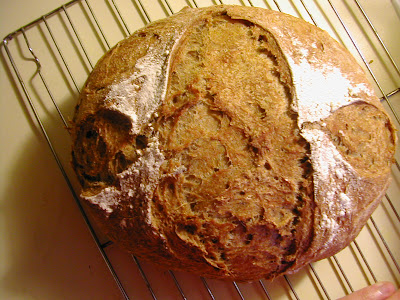I haven't always loved the look of granny square afghans. Up until recently I thought they were down right ugly. All those colors that don't seem to go with each other--Yuck! But recently, within the last year really, my tastes began to change. Over the past 12 months, I've been growing to love those granny square blankets with all their different colors sewn together. In fact, I began to feel sad that I didn't know how to crochet granny squares!
It was then that I began to look for knit granny square patterns. I searched through ravelry and found nothing that really excited me. I did find some interesting ideas for knit hexagons and pentagons, but they all used one color. I wanted to make colorful knit granny squares!
A couple of weeks ago I began to search for knit flower patterns for a flower that I wanted to pin to my new hat. I found one, and guess what? After ironing the flower, I realized this knit flower was a two-color pentagon! Did I get excited! I headed straight to the yarn scrap basket and began to pull out some colors that I liked together, I cast-on and began knitting away!

Now I have six flowers done and one more on the needles. My plan is to make 12 flowers and sew them together into a square to contribute to a group afghan the knitters in my community are making.
The problem I ran into when trying to put these flowers together was how to make them fit together into something like a square. I thought this would be simple, but oh no! It became a puzzle, and quite a fun one, too. I put the six finished flowers on the table and moved them around. At first I thought I would try to match the outside edges of the flower together like so:
After messing around with the flowers for a few minutes, it was obvious they would not fit together in that configuration and make something like a square at the same time. Plus the finished blob was way bigger than 12" x 12" which is the size requirement for the project I'm contributing to.
I twisted and turned the flowers some more until I realized that the petals need to fit inside each other to line up into a square-ish shape, like so:









